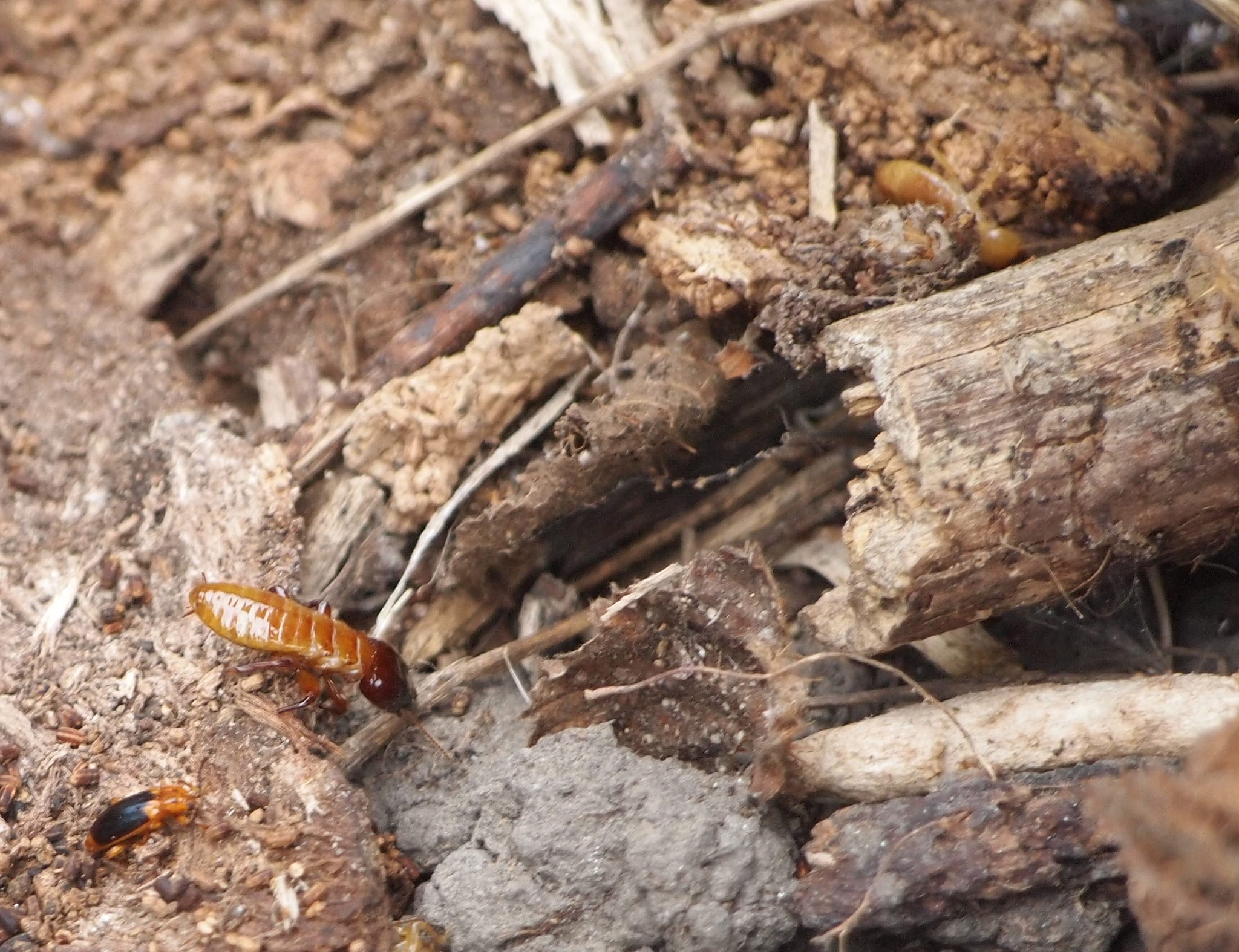You turn on your television, and the news anchors are talking about it: “2016 was the hottest year on record.†You're sitting in traffic and you hear it again: “The outbreak of hurricanes this year is a direct result of climate change.†The causes of these phenomena are always the same. Coal-fired power plants, internal-combustion cars, manufacturing plants. You've heard all of these a thousand times over, but has anyone ever told you that a global warming contributor could be the termites crawling around in your backyard, and you didn't even know it?

Let's back up a little. Greenhouse gases are molecules that absorb energy radiated from the surface of the Earth that would otherwise be reflected back into space. The energy absorbed by these molecules serves to warm both the atmosphere and the surface of the Earth, providing a climate amenable to life (known as the greenhouse effect). The concentration of the these greenhouse gases, though, has been increasing in recent years, allowing for more heat to be stored in the atmosphere and subsequently resulting in global warming. What people often don't realize is that methane (often overshadowed by is more popular cousin, CO2) has a global warming potential twenty-five times greater that than of CO2. And surprisingly, termites, the creepy crawly insects that you typically think of as eating away on the mainframe of your house, emit methane as a byproduct of their metabolism.
After termites munch on soil or decomposing wood, the leftovers make their way to the termite's gut where they are met by bacteria. The bacteria break down the plant matter anaerobically, producing carbon dioxide and methane. Because the termites can't use these molecules to perform any necessary biological functions, they are excreted, eventually making their way to the upper limits of our atmosphere.
Various estimates on the amount of methane produced annually by the metabolic functions of termites range from 1% of global methane emissions to 15%. This wide range comes from the difficulties scientists have in calculating termite concentrations in different ecological regions. We know that places like the Amazon have more colonies than countries like England and Scotland (termites like warm weather), but no one can physically count colony density to what degree the colony densities differs. Also, just because the conditions are ripe for colony survival, that doesn't mean that termites are actually there. And because diet affects a termite's methane production, this factor has to be taken into account too.

So let's be conservative and say that termites are only responsible for 4% of global methane production. Given that methane made up approximately 16% of all greenhouse gas emissions worldwide in 2010, this would mean that termites are responsible for 0.6% of all GHG emissions. That's a pretty large amount for a pretty small insect.
You may be asking: is there anything that can be done?
The greatest concentration of termites exist in natural environments (not the wooden 2×4's in your home). But don't call your exterminator and head out to the woods and try to fumigate everything in sight, because the answer to the termite problem is somewhat counterintuitive. A study conducted in Cameroon over two years showed that logging had the immediate effect of destroying termite habitats. But only large trees were usable for industrial purposes. All of the trees that did not pass the standard were left broken on the ground where they decayed. Then new trees were planted in the same area. Termites moved back in, now with option of dwelling on the ground and eating the decaying matter in the soil or making their residence in the newly planted trees. Double the living space, double the termites, double the methane emitted. As clear-cutting becomes more prevalent, we can predict that termite colonies will continue to expand.
If you're looking for personal ways to combat this clear-cutting and its contribution to global warming here are some ideas: go paperless, recycle as much as possible, don't use firewood to heat your fireplaces, hug a tree.
About the Author
 Liz Keith is an undergraduate student at the University of Georgia pursuing a degree in Environmental Engineering. In her free time you can find Liz driving to Jackson County to hangout with her Young Life girls, talking about the summer camp she works at, or beep-bopping around town in search of the best breakfast restaurant. You can contact her at epk79175@uga.edu. More from Liz Keith. Liz Keith is an undergraduate student at the University of Georgia pursuing a degree in Environmental Engineering. In her free time you can find Liz driving to Jackson County to hangout with her Young Life girls, talking about the summer camp she works at, or beep-bopping around town in search of the best breakfast restaurant. You can contact her at epk79175@uga.edu. More from Liz Keith. |
About the Author
- athenssciencecafehttps://athensscienceobserver.com/author/athenssciencecafe/April 17, 2020
- athenssciencecafehttps://athensscienceobserver.com/author/athenssciencecafe/April 12, 2020
- athenssciencecafehttps://athensscienceobserver.com/author/athenssciencecafe/April 3, 2020
- athenssciencecafehttps://athensscienceobserver.com/author/athenssciencecafe/March 30, 2020







